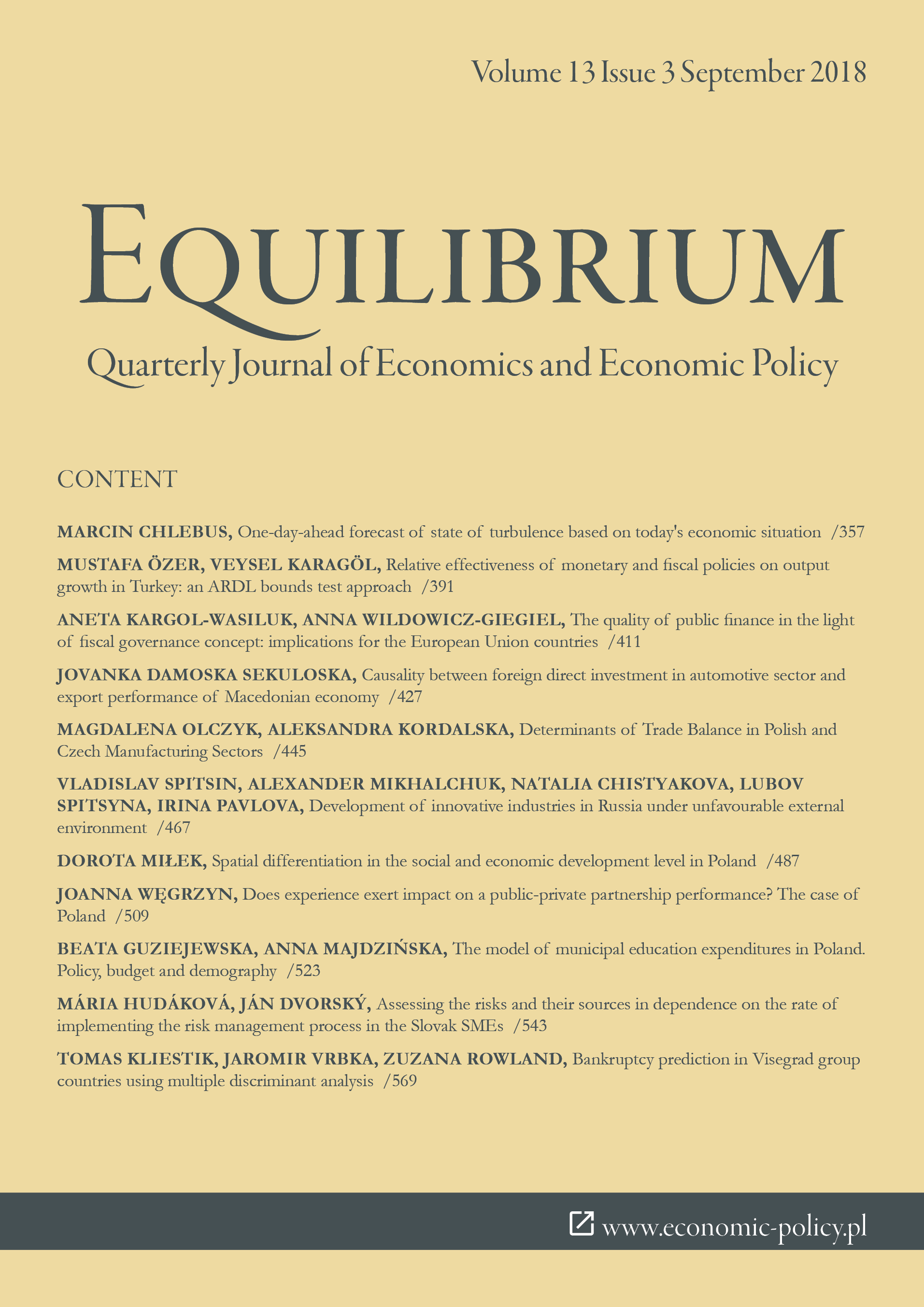Spatial differentiation in the social and economic development level in Poland
Spatial differentiation in the social and economic development level in Poland
Author(s): Dorota MiłekSubject(s): Economy, Geography, Regional studies, Labor relations, Economic policy, Evaluation research, Economic development, Socio-Economic Research
Published by: Instytut Badań Gospodarczych
Keywords: region; regional development; regional differentiation; Hellwig’s method, Ward’s method; natural breaks classification;
Summary/Abstract: Social and economic development involves a broad spectrum of social, economic and spatial phenomena. The multi-faceted nature of regional development arises directly from the fact that it is shaped by multiple factors. Current discourse emphasizes the role of endogenous factors, which indicate the specific nature and the distinctive features of the given territory. Mobilizing the endogenous potential ensures stable regional development dynamics. At the moment, one of the fundamental economic problems are the increasing differences in the development of specific regions. Purpose of the article: The purpose of this study is to assess the differentiation of the social and economic level development of Polish Voivodeships, applying the selected assessment methods for the years 2010 and 2015, draw up a rank list of regional units according to their development levels, and identify the groups of Voivodeships sharing similar development levels. The indicators used in this study, characterizing the level of the social and economic development, have been systematized according to the following areas: demographics and labor market, regional entrepreneurship, local economy structure, innovation and research & development activities, technical infrastructure, social infrastructure, and the condition and protection of the natural environment. Methods: The level of the social and economic development of Polish Voivodeships was assessed using Zdzisław Hellwig’s development pattern method, which made it possible to rank them according to the level of development of Polish Voivodeship. The methodology is supplemented by Ward’s agglomerative clustering method, which made it possible to distinguish other Voivodeships according to the analysed phenomenon. The Voivodeship clustering method used Jenks' natural breaks classification method. Findings & Value added: Pursuing the research aims, the authors focused in particular on clear spatial differences. Through the analysis we were able to identify the changes in the social and economic development processes of the Polish regions. The Voivodeships were divided into groups according to their development level: the highest, high, low and the lowest.
Journal: Equilibrium. Quarterly Journal of Economics and Economic Policy
- Issue Year: 13/2018
- Issue No: 3
- Page Range: 487-507
- Page Count: 21
- Language: English

